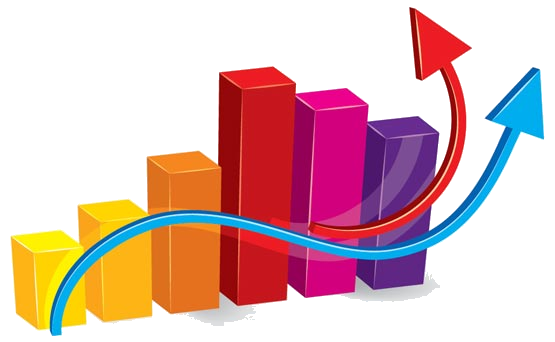Macroeconomic Theory and Policy
Assignment 1
Due: On (or before) Friday, October 11, 4:00pm
(Note: Assignments submitted after 4:00pm on October 11th WILL NOT BE accepted under ANY circumstance.)
This page should be the cover page of your assignment.
Group members: Student number1
2
3
4
5
Instructions:
• You can submit an individual or group assignment. If you submit a group assignment, there must be no more than FIVE students in your group (coming from the section of MGEB05 this term) and you just have to submit ONE copy.
• A PENALTY OF 10% OF THE TOTAL MARKS will be imposed if you FAIL TO DO EITHER OF THE FOLLOWING (20% if you fail to do both):
1) Submit this page as your cover page (complete the information above)
2) STAPLE your assignment (paper clips are NOT accepted)
• Label your graph(s); otherwise, marks will be subtracted.
• No credit will be given if you do not show your work (i.e. don’t simply say the answer is 3 write down enough of the steps you used to arrive at this answer).
• Your answer should be structured in a way such that those that know little about economics will have no difficulty understanding your argument/answer.
• DO NOT USE any notations that are not used in lectures. If you use your own notations and/or abbreviations that are not being used in lectures, you will receive a grade of zero for that question.
• 75 total points
Question 1 (20 points) – Chapters 2
The following tables provide the economic data for an economy.
Year Year 1 Year 2 Year 3
Price Quantity Price Quantity Price Quantity
Bread 2 56500 1.9 55000 2.1 58000
Cars 22350 600 24120 660 24770 570
TV sets 480 1560 495 1680 517 1740
Computers 1500 75000 1350 65000 1200 65000
Ice Wine 45 32500 47.5 33000 52 30000
Machinery 9500 9785 10740 9900 11000 10250
Additional information about this economy which holds true for all 3 years unless otherwise stated:
• Local bakers sell 15% of the bread produced to foreigners and the remaining to consumers.
• Households purchase all the cars; however, only half of the cars are produced domestically while the other half is produced abroad.
• The country does not produce any TA sets, and all the TV sets are bought by domestic residents.
• Purchases of computers is equally split between households and firms. In addition, all computers are made and assembled locally.
• Domestic wine producers sell all of their production to local residents.
• Local firms purchase all the machinery.
• There is no imputed rent in this economy.
Notes:
• Keep your answers to at least 2 decimal places.
a) Use the expenditure approach to solve for nominal: GDP, private sector consumption, and net exports for all three years. (9 points)
b) Compute the GDP deflator for all three years, using year 1 as the base year. (3 points)
c) Find the CPI for all three years, using year 1 as the base year. (4 points)
d) Did CPI and GDP deflator move to the same direction? If not, why? Explain. (4 points)
Hint: You just need to provide one explanation.
Question 2 (30 points) – Chapter 3
A closed economy can be described by the long-run classical model:
Y = 3K0.25L0.75 MPK = 0.75K- 0.75L0.75 MPL = (9/4)K0.25L- 0.25
C = 18500 + 0.75(Y – T) – 500r
I(r) = 11700 – 500r
Note: r represents the real interest rate and is measured in percentage points (for example, if we find r = 10, then r is interpreted as being equal to 10%). Keep your answer to 4 decimal places if needed.
Assume that there are two factors of production, capital (K) and labour (L), and that they are both fully employed. For this economy the supply of capital and labour are 50625 and 20736 respectively. In addition, labour’s share of output is equal to three quarters. Initially, the government collects 10% of the economy’s output as (income) taxes, and the size of the budget deficit is 796.
a) Compute the long-run equilibrium levels of consumption, investment and real interest rate. Also, find the long-run equilibrium real wage for labour and real rental price of capital. (5 points)
Suppose a law that requires the government to run a balanced budget is passed. In order to comply with the newly passed law, the government adjusts the level of government spending.
b) Find the new long-run equilibrium levels of real interest rate, real wage for labour and real rental price of capital. (5 points)
c) Use THREE diagrams (the loanable funds market diagram, the labour market diagram, and the rental market for capital diagram) to show your findings in parts (a) and (b). Be sure to clearly identify the equilibrium to each part of the question in your diagrams. No written explanation is needed. (5 points)
Now, return to the initial long-run equilibrium as shown in part (a). Suppose both households and firms change their behaviours such that households decide to save more while firms decide to spend more the accumulation of physical capital. As a result, both autonomous consumption and autonomous investment change by 10%.
d) Find the new long-run equilibrium levels of real interest rate, real wage for labour and real rental price of capital. (5 points)
e) Use THREE diagrams (the loanable funds market diagram, the labour market diagram, and the rental market for capital diagram) to show your findings in parts (a) and (d). Be sure to clearly identify the equilibrium to each part of the question in your diagrams. No written explanation is needed. (5 points)
f) Suppose the government wants to set the (real) interest rate at 10.74% via a change in government spending. Find the level of government spending that could achieve this goal. What is the new equilibrium level of investment? What happens to the government budget surplus/deficit? Explain. (5 points)
Question 3 (25 points) – Chapter 3
Initially, the economy is in steady state. Suppose there is a change in tax policy such that the government imposes a sales tax.
a) In the context of the long-run classical model, what happens to the long-run equilibrium levels of investment and real interest rate? What happens to the real wage? Explain and support your answer with TWO diagrams: one for the market for loanable funds and one for the labour market (only the first two diagrams will be graded). (15 points)
b) How, if at all, would your answer change if the government also used all the new tax revenue collected to finance an increase in government spending on goods and services? So in the context of the long-run classical model, explain what happens to the long-run equilibrium levels of investment and real interest rate. Explain and support your answer with ONE new loanable funds market diagram. Hint: Every single new dollar of tax revenue is converted into a new dollar of government spending on goods and services. (10 points)

 Our orders are delivered strictly on time without delay
Our orders are delivered strictly on time without delay  Our orders are delivered strictly on time without delay
Our orders are delivered strictly on time without delay 



